-
 Bitcoin
Bitcoin $106,754.6083
1.33% -
 Ethereum
Ethereum $2,625.8249
3.80% -
 Tether USDt
Tether USDt $1.0001
-0.03% -
 XRP
XRP $2.1891
1.67% -
 BNB
BNB $654.5220
0.66% -
 Solana
Solana $156.9428
7.28% -
 USDC
USDC $0.9998
0.00% -
 Dogecoin
Dogecoin $0.1780
1.14% -
 TRON
TRON $0.2706
-0.16% -
 Cardano
Cardano $0.6470
2.77% -
 Hyperliquid
Hyperliquid $44.6467
10.24% -
 Sui
Sui $3.1128
3.86% -
 Bitcoin Cash
Bitcoin Cash $455.7646
3.00% -
 Chainlink
Chainlink $13.6858
4.08% -
 UNUS SED LEO
UNUS SED LEO $9.2682
0.21% -
 Avalanche
Avalanche $19.7433
3.79% -
 Stellar
Stellar $0.2616
1.64% -
 Toncoin
Toncoin $3.0222
2.19% -
 Shiba Inu
Shiba Inu $0.0...01220
1.49% -
 Hedera
Hedera $0.1580
2.75% -
 Litecoin
Litecoin $87.4964
2.29% -
 Polkadot
Polkadot $3.8958
3.05% -
 Ethena USDe
Ethena USDe $1.0000
-0.04% -
 Monero
Monero $317.2263
0.26% -
 Bitget Token
Bitget Token $4.5985
1.68% -
 Dai
Dai $0.9999
0.00% -
 Pepe
Pepe $0.0...01140
2.44% -
 Uniswap
Uniswap $7.6065
5.29% -
 Pi
Pi $0.6042
-2.00% -
 Aave
Aave $289.6343
6.02%
Will the gap be filled?
Gaps in crypto markets, like breakout, exhaustion, and common gaps, can be influenced by sentiment, volume, and news; traders use historical data and strategies to predict and trade them.
Jun 12, 2025 at 06:56 pm
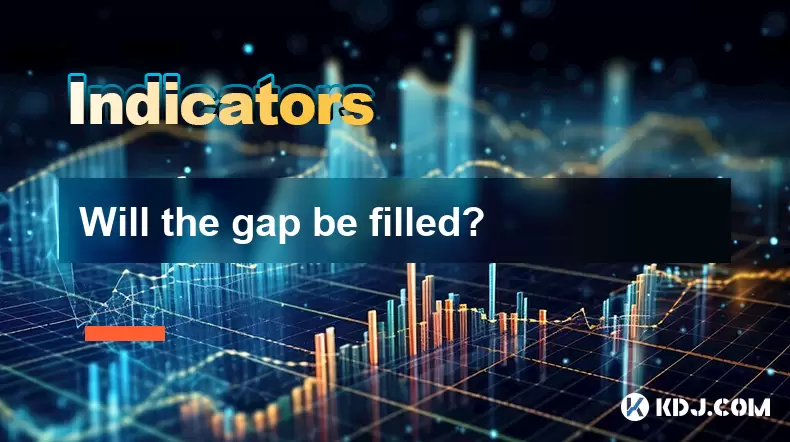
Understanding the Concept of Gaps in Cryptocurrency Markets
In the world of cryptocurrency trading, gaps refer to price ranges where no trading activity has occurred, often seen on charts as blank spaces between two price levels. These gaps can occur due to various reasons, such as significant news events, market sentiment shifts, or sudden changes in supply and demand dynamics. The question of whether these gaps will be filled is a common concern among traders and investors. To address this, it's essential to delve into the types of gaps, their causes, and the factors influencing whether they get filled.
Types of Gaps in Crypto Markets
There are primarily three types of gaps that traders encounter in the cryptocurrency markets:
Breakout Gaps: These occur when the price breaks out of a consolidation or trading range, often driven by strong bullish or bearish sentiment. For instance, if a cryptocurrency has been trading between $10,000 and $11,000 for weeks and suddenly jumps to $12,000, a breakout gap forms.
Exhaustion Gaps: These gaps appear at the end of a strong upward or downward trend, signaling that the trend might be nearing its end. An exhaustion gap might be seen if a cryptocurrency that has been steadily rising suddenly gaps up to $15,000 after a long bullish run, indicating potential overbought conditions.
Common Gaps: These are minor gaps that occur within the normal trading range of a cryptocurrency and are often filled quickly. For example, a common gap might be seen if a cryptocurrency briefly jumps from $9,900 to $10,100 within a day before returning to the previous range.
Factors Influencing Gap Filling
Several factors can influence whether a gap in the cryptocurrency market will be filled:
Market Sentiment: Strong bullish or bearish sentiment can drive prices to fill gaps. If the market sentiment remains strong after a gap forms, the likelihood of the gap being filled decreases.
Volume: High trading volume after a gap can indicate strong interest and may lead to the gap being filled more quickly. Conversely, low volume might suggest a lack of interest, making it less likely for the gap to be filled.
Technical Levels: Key technical levels such as support and resistance can play a significant role. If a gap forms near a strong support or resistance level, the probability of it being filled increases.
News and Events: Significant news or events can cause gaps and also influence whether they get filled. For example, a favorable regulatory announcement might cause a bullish gap, but if the news is later seen as less impactful, the gap might be filled.
Analyzing Historical Data on Gap Filling
To understand the likelihood of gaps being filled, traders often analyze historical data. For instance, if a cryptocurrency like Bitcoin has a history of filling breakout gaps within a certain timeframe, traders might expect similar behavior in the future. Historical data can be analyzed using various tools and platforms, such as:
TradingView: This platform allows traders to plot historical price data and identify gaps. By reviewing past charts, traders can see how often gaps were filled and the average time it took.
Coinigy: Another tool that provides comprehensive charting and analysis capabilities, allowing traders to study gap patterns over different time frames.
CryptoWatch: This platform offers real-time data and historical charts, helping traders to track gap occurrences and their outcomes.
Strategies for Trading Gaps
Traders often employ specific strategies when dealing with gaps in the cryptocurrency markets:
Gap Filling Strategy: This involves anticipating that a gap will be filled and taking positions accordingly. For example, if a trader believes a bullish gap will be filled, they might short the cryptocurrency at the higher price level, aiming to profit when the price drops back to fill the gap.
Breakout Trading: Traders might also use gaps as signals for breakouts. If a cryptocurrency gaps above a significant resistance level, a trader might go long, expecting the price to continue rising.
Stop-Loss and Take-Profit Orders: To manage risk, traders often set stop-loss orders below the gap and take-profit orders near the expected fill level. This helps to protect against adverse movements while capitalizing on potential gap fills.
Tools and Indicators for Gap Analysis
Several technical indicators and tools can help traders analyze and predict gap filling:
Candlestick Patterns: Patterns such as doji, hammer, and shooting star can provide insights into potential reversals that might lead to gap filling.
Moving Averages: Simple and exponential moving averages can help identify trends and potential reversal points, which might coincide with gap filling.
Volume Profile: This tool shows trading volume at different price levels, helping traders understand where significant buying or selling pressure might lead to gap filling.
Fibonacci Retracement: By drawing Fibonacci levels on a chart, traders can identify potential support and resistance levels where gaps might be filled.
Frequently Asked Questions
Q: Can gaps in cryptocurrency markets be predicted?
A: While gaps cannot be predicted with absolute certainty, traders can use historical data, technical analysis, and market sentiment to make educated guesses about the likelihood of a gap forming and being filled.
Q: How long does it typically take for a gap to be filled?
A: The time it takes for a gap to be filled varies widely and depends on factors like market sentiment, trading volume, and the type of gap. Some gaps are filled within hours, while others might take days or even weeks.
Q: Are there specific cryptocurrencies where gaps are more likely to be filled?
A: The likelihood of gaps being filled can vary between different cryptocurrencies. Highly liquid cryptocurrencies like Bitcoin and Ethereum might see gaps filled more quickly due to higher trading volumes, while less liquid altcoins might experience longer gaps.
Q: Can gaps be used to identify trading opportunities?
A: Yes, gaps can be used to identify trading opportunities. Traders often look for gaps as signals for potential breakouts or reversals, and they can use gap filling strategies to profit from price movements back to previous levels.
Disclaimer:info@kdj.com
The information provided is not trading advice. kdj.com does not assume any responsibility for any investments made based on the information provided in this article. Cryptocurrencies are highly volatile and it is highly recommended that you invest with caution after thorough research!
If you believe that the content used on this website infringes your copyright, please contact us immediately (info@kdj.com) and we will delete it promptly.
- 2025-W Uncirculated American Gold Eagle and Dr. Vera Rubin Quarter Mark New Products
- 2025-06-13 06:25:13
- Ruvi AI (RVU) Leverages Blockchain and Artificial Intelligence to Disrupt Marketing, Entertainment, and Finance
- 2025-06-13 07:05:12
- H100 Group AB Raises 101 Million SEK (Approximately $10.6 Million) to Bolster Bitcoin Reserves
- 2025-06-13 06:25:13
- Galaxy Digital CEO Mike Novogratz Says Bitcoin Will Replace Gold and Go to $1,000,000
- 2025-06-13 06:45:13
- Trust Wallet Token (TWT) Price Drops 5.7% as RWA Integration Plans Ignite Excitement
- 2025-06-13 06:45:13
- Ethereum (ETH) Is in the Second Phase of a Three-Stage Market Cycle
- 2025-06-13 07:25:13
Related knowledge
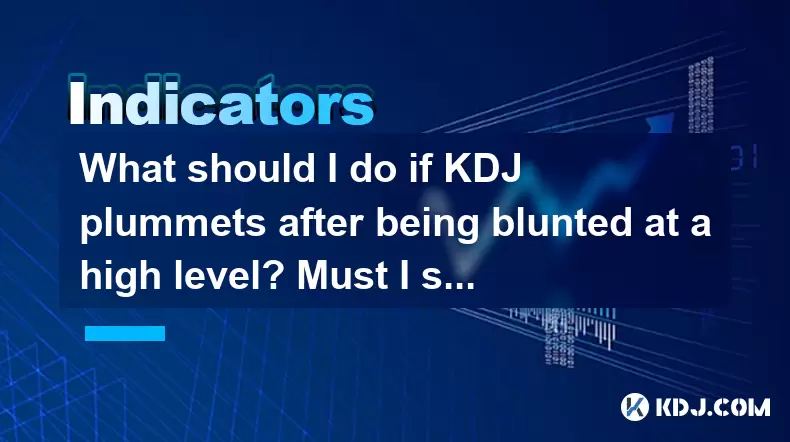
What should I do if KDJ plummets after being blunted at a high level? Must I stop loss?
Jun 17,2025 at 12:01pm
Understanding KDJ Indicator Dynamics in Cryptocurrency TradingThe KDJ indicator, also known as the stochastic oscillator, is a momentum-based tool used to identify overbought and oversold conditions in financial markets, including cryptocurrency. It consists of three lines: the %K line (fast stochastic), the %D line (slow stochastic), and the %J line (d...
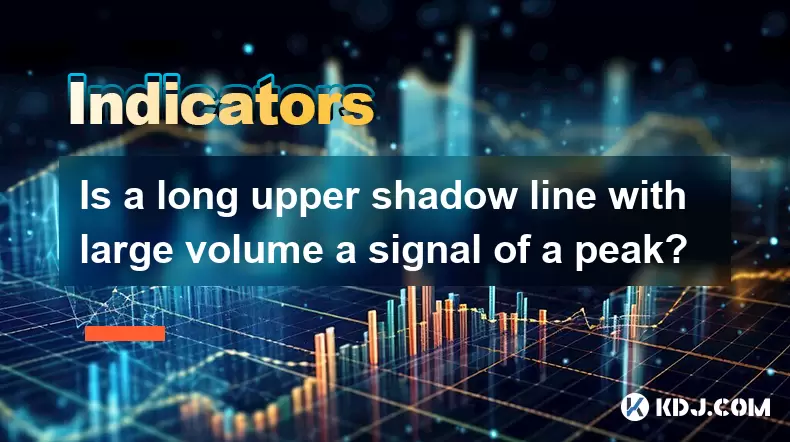
Is a long upper shadow line with large volume a signal of a peak?
Jun 17,2025 at 05:07am
Understanding the Long Upper Shadow LineA long upper shadow line, often referred to as a shooting star or inverted hammer depending on its location in a chart, is a candlestick pattern that indicates potential reversal from an uptrend. This pattern forms when prices rise significantly during the trading period but then fall back to close near the openin...

How to confirm the effectiveness of the average price line support in the time-sharing chart?
Jun 17,2025 at 12:56am
Understanding the Time-Sharing Chart and Its RelevanceIn cryptocurrency trading, time-sharing charts play a crucial role in analyzing short-term price movements. These charts typically display price fluctuations over a specific period, often ranging from minutes to hours. Traders rely on them to make quick decisions based on real-time data. The average ...
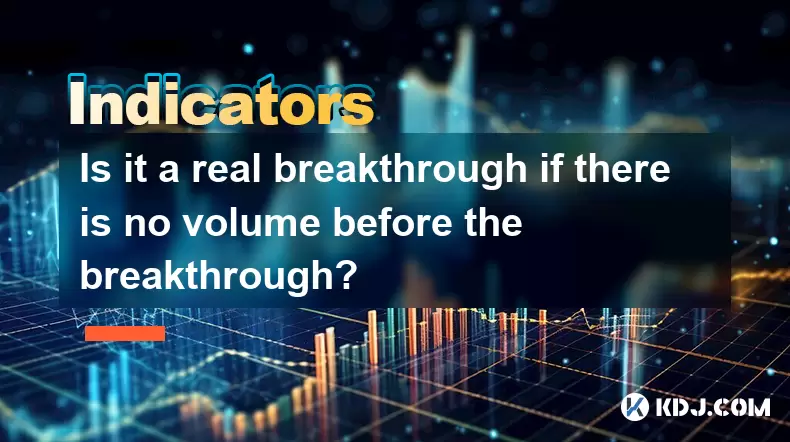
Is it a real breakthrough if there is no volume before the breakthrough?
Jun 17,2025 at 08:03am
Understanding the Concept of a Breakthrough in Cryptocurrency TradingIn cryptocurrency trading, a breakthrough typically refers to a price movement that surpasses a key resistance or support level. Traders often look for such events as potential signals for trend continuation or reversal. However, a crucial factor that determines the strength and reliab...

What does it mean when the momentum indicator breaks above the zero axis?
Jun 17,2025 at 12:43am
Understanding the Momentum IndicatorThe momentum indicator is a technical analysis tool used to measure the speed or velocity of price movements in cryptocurrency markets. It helps traders identify potential trend reversals, overbought or oversold conditions, and confirms existing trends. The indicator typically oscillates around a zero line, with value...
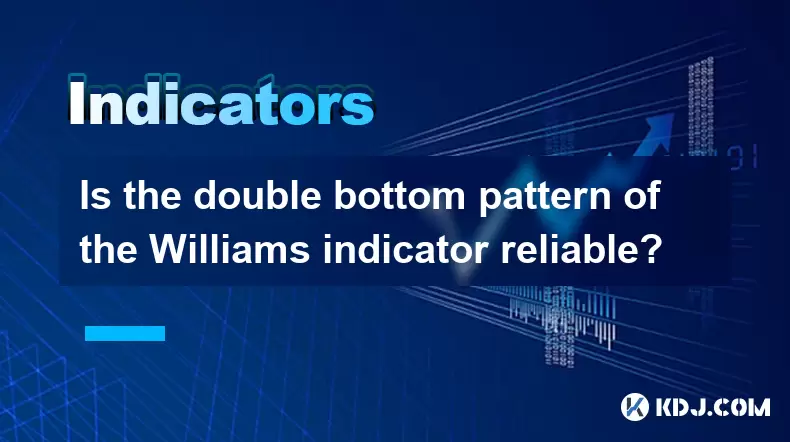
Is the double bottom pattern of the Williams indicator reliable?
Jun 17,2025 at 03:56am
Understanding the Williams Indicator and Its SignificanceThe Williams %R indicator, often referred to as Williams Percent Range, is a momentum oscillator used in technical analysis to identify overbought or oversold conditions in the market. Developed by Larry Williams, this indicator fluctuates between 0 and -100, with readings above -20 indicating ove...

What should I do if KDJ plummets after being blunted at a high level? Must I stop loss?
Jun 17,2025 at 12:01pm
Understanding KDJ Indicator Dynamics in Cryptocurrency TradingThe KDJ indicator, also known as the stochastic oscillator, is a momentum-based tool used to identify overbought and oversold conditions in financial markets, including cryptocurrency. It consists of three lines: the %K line (fast stochastic), the %D line (slow stochastic), and the %J line (d...

Is a long upper shadow line with large volume a signal of a peak?
Jun 17,2025 at 05:07am
Understanding the Long Upper Shadow LineA long upper shadow line, often referred to as a shooting star or inverted hammer depending on its location in a chart, is a candlestick pattern that indicates potential reversal from an uptrend. This pattern forms when prices rise significantly during the trading period but then fall back to close near the openin...

How to confirm the effectiveness of the average price line support in the time-sharing chart?
Jun 17,2025 at 12:56am
Understanding the Time-Sharing Chart and Its RelevanceIn cryptocurrency trading, time-sharing charts play a crucial role in analyzing short-term price movements. These charts typically display price fluctuations over a specific period, often ranging from minutes to hours. Traders rely on them to make quick decisions based on real-time data. The average ...

Is it a real breakthrough if there is no volume before the breakthrough?
Jun 17,2025 at 08:03am
Understanding the Concept of a Breakthrough in Cryptocurrency TradingIn cryptocurrency trading, a breakthrough typically refers to a price movement that surpasses a key resistance or support level. Traders often look for such events as potential signals for trend continuation or reversal. However, a crucial factor that determines the strength and reliab...

What does it mean when the momentum indicator breaks above the zero axis?
Jun 17,2025 at 12:43am
Understanding the Momentum IndicatorThe momentum indicator is a technical analysis tool used to measure the speed or velocity of price movements in cryptocurrency markets. It helps traders identify potential trend reversals, overbought or oversold conditions, and confirms existing trends. The indicator typically oscillates around a zero line, with value...

Is the double bottom pattern of the Williams indicator reliable?
Jun 17,2025 at 03:56am
Understanding the Williams Indicator and Its SignificanceThe Williams %R indicator, often referred to as Williams Percent Range, is a momentum oscillator used in technical analysis to identify overbought or oversold conditions in the market. Developed by Larry Williams, this indicator fluctuates between 0 and -100, with readings above -20 indicating ove...
See all articles

























































































